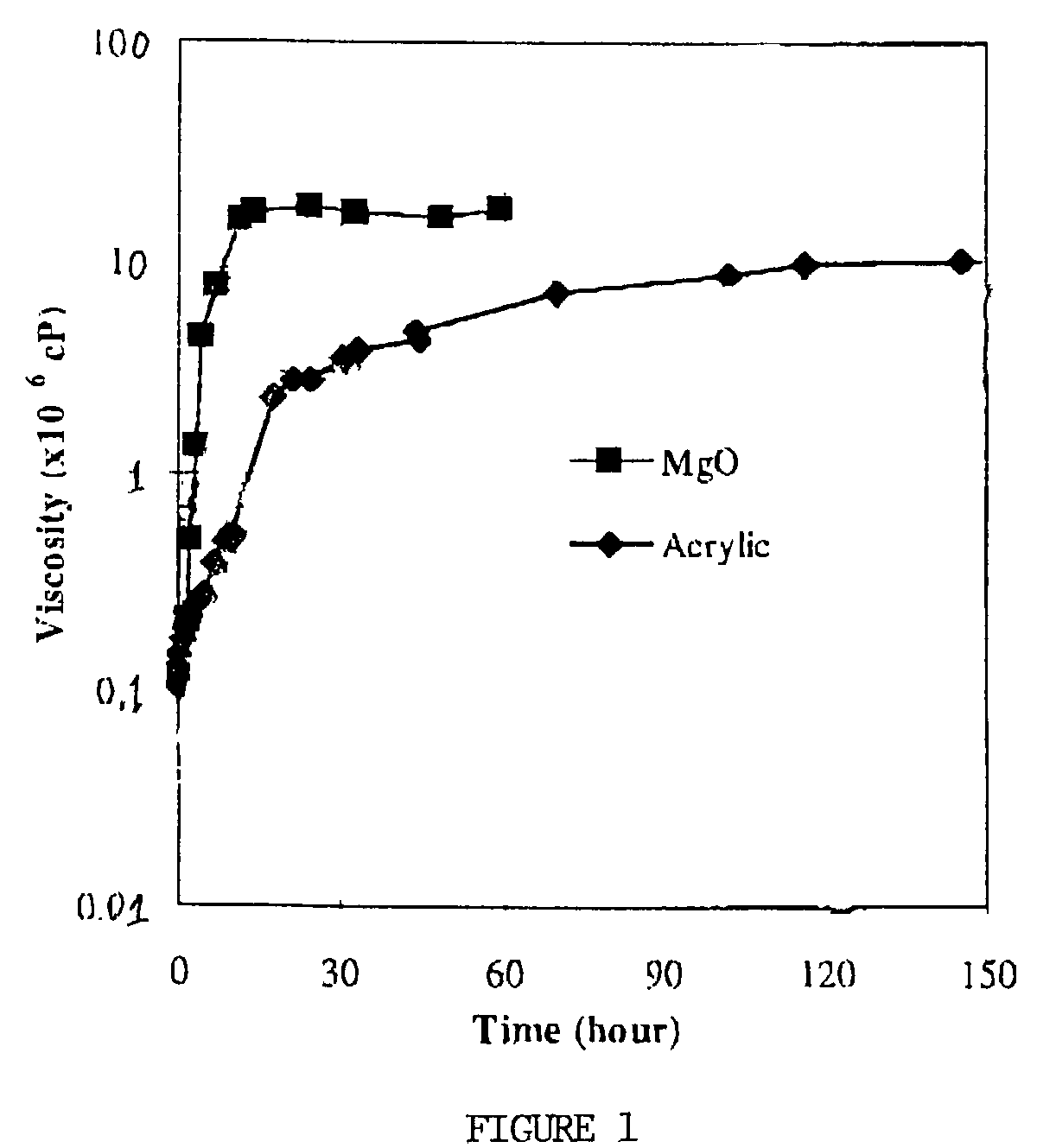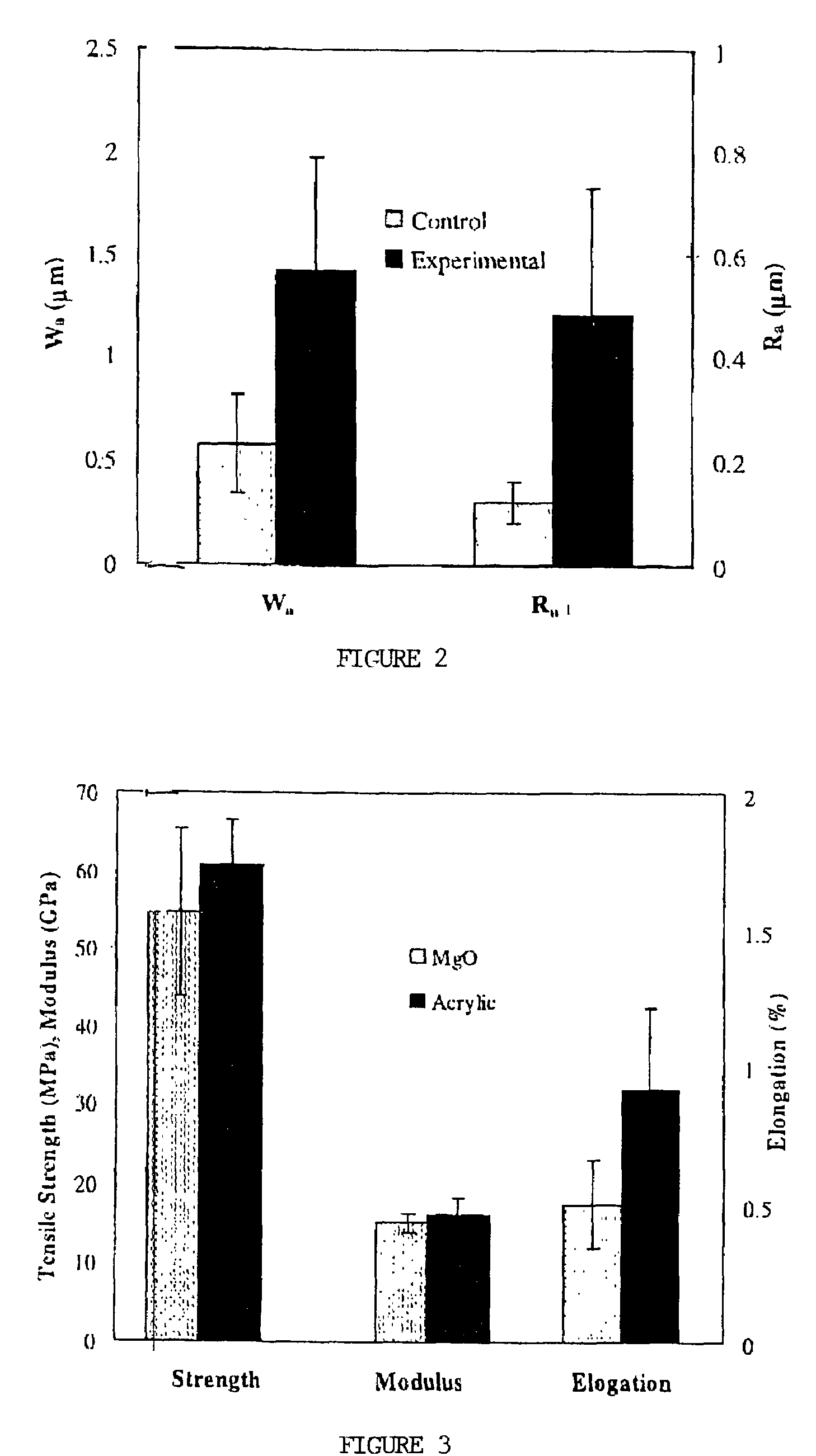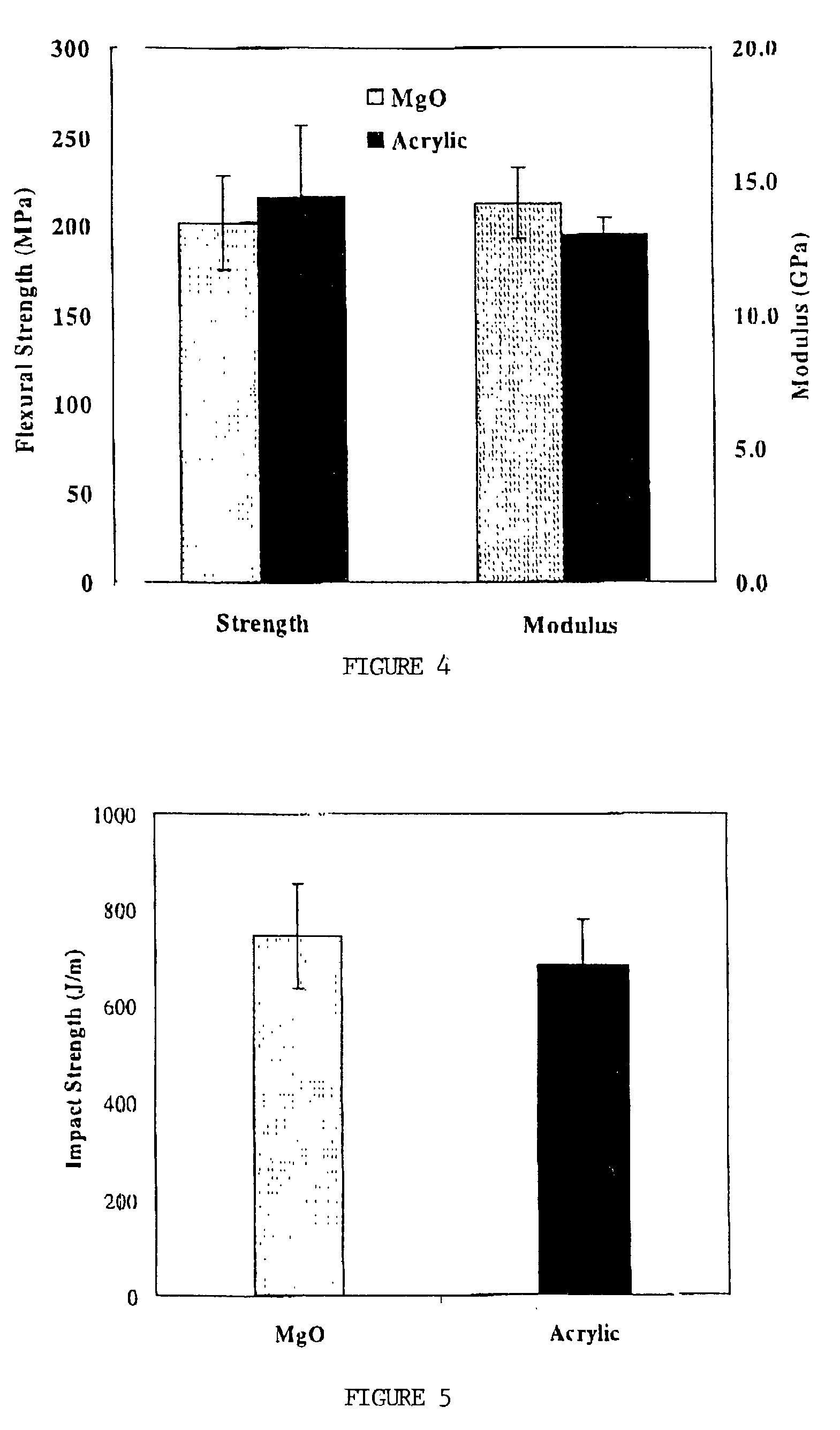Low temperature molding compositions with solid thermoplastic elastomer thickeners and fiber reinforcement
a technology of solid thermoplastic elastomers and low temperature molding compositions, which is applied in the field of thermosetting molding composition preparation, can solve the problems of linear thermoplastic vinyl polymers easily absorbing surrounding liquids, azo initiators irreversibly decomposing when heated, swelling and sometimes dissolution, etc., and achieves the effects of reducing waste, reducing operator and patient exposure, and prolonging shelf li
- Summary
- Abstract
- Description
- Claims
- Application Information
AI Technical Summary
Benefits of technology
Problems solved by technology
Method used
Image
Examples
Embodiment Construction
[0038]These and other objects are achieved through the methods and compositions of this invention which comprises molding compositions and precursors thereto. This includes sheet molding compositions which are composed basically of four principle ingredients: thermosetting resins (resin solution), fibers, optionally fillers and optionally additives. With this overall combination in place, it is feasible to use various types of specific ingredients to meet the required properties of the final product, and that makes SMC a very versatile reinforced composite with an almost indefinite number of possible formulations. A general formula of typical sheet molding compounds, employing a variety of free radicals, initiators and other ingredients, which can be used in the method of thickening polymerizable resin solutions into moldable compositions provided by this invention follows.
[0039]Suitable resin solutions are made by dissolving a curable resin polymer, in a curable monomer, oligomer o...
PUM
| Property | Measurement | Unit |
|---|---|---|
| particle size | aaaaa | aaaaa |
| particle size | aaaaa | aaaaa |
| particle size | aaaaa | aaaaa |
Abstract
Description
Claims
Application Information
 Login to View More
Login to View More - R&D
- Intellectual Property
- Life Sciences
- Materials
- Tech Scout
- Unparalleled Data Quality
- Higher Quality Content
- 60% Fewer Hallucinations
Browse by: Latest US Patents, China's latest patents, Technical Efficacy Thesaurus, Application Domain, Technology Topic, Popular Technical Reports.
© 2025 PatSnap. All rights reserved.Legal|Privacy policy|Modern Slavery Act Transparency Statement|Sitemap|About US| Contact US: help@patsnap.com



